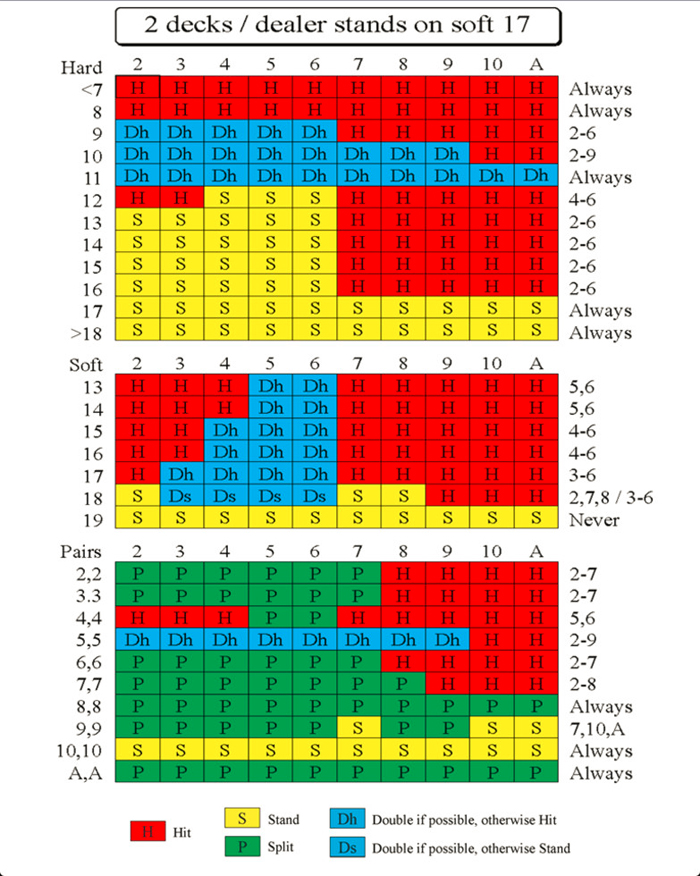The Basic Strategy for Blackjack
The Game of Blackjack – what you can do to up your odds |
|---|
|
Blackjack charts are essentially mathematically proven ways to minimize the chances of the house or the dealer while playing a hand of blackjack. Obviously, a decrease in the chances of the house correlates directly to an increase in your chances of winning. Once a blackjack player master’s these basics, he or she can then progress to twisting and tweaking with the charts to suit specific situations which may vary depending on the exact type of blackjack that is being played and also depending on the rules that the casino has enforced upon the game.
Blackjack strategy – increase the odds of winningThere is a method called the Blackjack basic strategy which you can use to increase your odds of winning effectively, this is a tried and tested method and was derived using repeated computer simulations. The Basic strategy is just some blackjack commandments you need to memorize and execute depending on the dealers up card. The basic strategy chart will dictate as to how you should go about playing your first two cards in a hand (this varies depending on the dealers up card). If executed properly, the strategy ensures that the odds of the dealer or the house are slashed substantially. To be able to play the basic strategy methods, you need to understand basic strategy charts. However, you can find it laid out below in layman’s terms, just follow these golden rules and you are certainly on your way to making some decent cash. (A hard hand is a term used to describe a hand with two staring cards and none of them are an ace, a soft hand is when one of the two starting cards is an ace)
Rules for a hard hand start
Rules for a soft hand start
Rules for Pairs
These are only three basic charts, as mentioned earlier; there are more complicated versions of these methodologies which adapt subtle changes to accommodate for different house rules. To be able to get to that stage though, you first need to know these three charts like the back of your hand.
|


